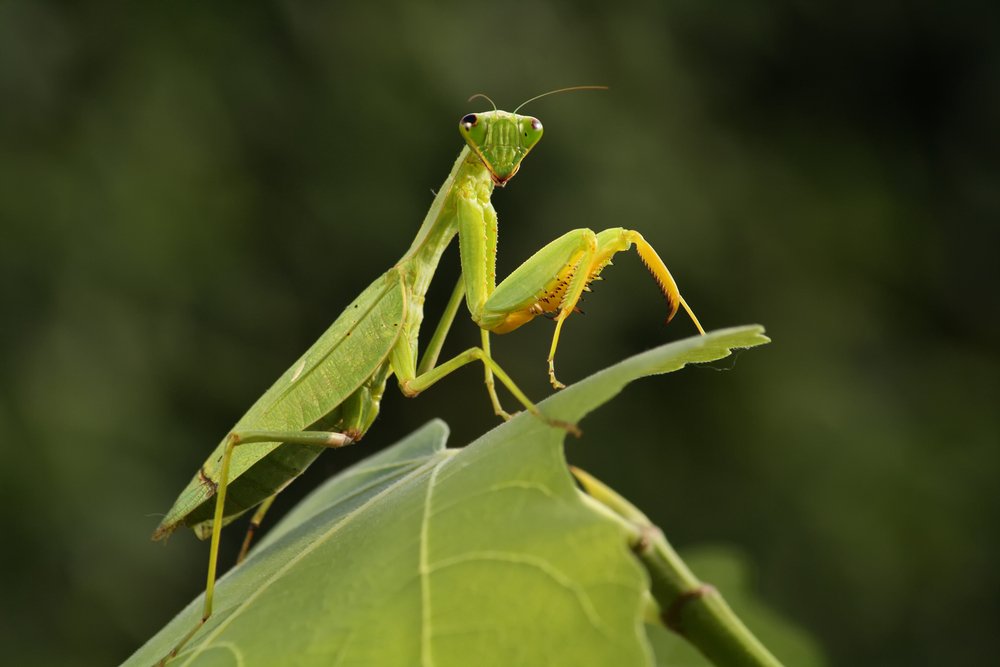When I was a child, I was terrified of praying mantises. I thought they looked like little mini-space aliens. And I really didn’t like the way they’d turn their head to look right at you. As an adult, I developed a respect for these hungry little predators.
Praying mantises are related to cockroaches and termites. They belong to the order mantodea. The name is derived from the ancient Greek word for “prophet.” Mantises have excellent vision so are most active during the day when they see better. Not only can they detect movement up to 60 feet away, but they are the only insect that can turn their heads 180 degrees—so if you’ve ever had the feeling that they are looking right at you, they are!
Mantises are voracious predators and will eat almost any insect. Larger species have been known to eat small lizards, frogs, or snakes. They will even resort to cannibalism. As a matter of fact, about one-third of the males that approach a female will get eaten during or after mating.
Mantises lay 100 to 400 eggs in a foamy egg case called an ootheca. The eggs hatch as nymphs in the spring. Nymphs look like miniature adults, but lack wings and, as they grow, will molt several times over the course of the summer.
Most mantises rely on camouflage to blend in with their surroundings. This not only helps them to avoid predators like birds but hides them from their prey. Mantises tend to be “ambush” predators—waiting until an unwary insect comes close, then grasping them with their very strong spiny front legs. If they put up a fight, they simply eat their heads first. Mantises can bite humans (although they usually don’t) but are not toxic.
Like ladybugs, some people will order mantis egg cases to place in their garden. While mantises are good predators, that is also a danger—they are such good predators, that they will eat butterflies, other good predatory bugs like ladybugs, and even honeybees.
I’m not afraid of praying mantises anymore, and am happy when I find one in my garden. I do tend to relocate it away from my bee balm and other butterfly/bee attracting plants, though. And, yes, I still think they look like little space aliens.

